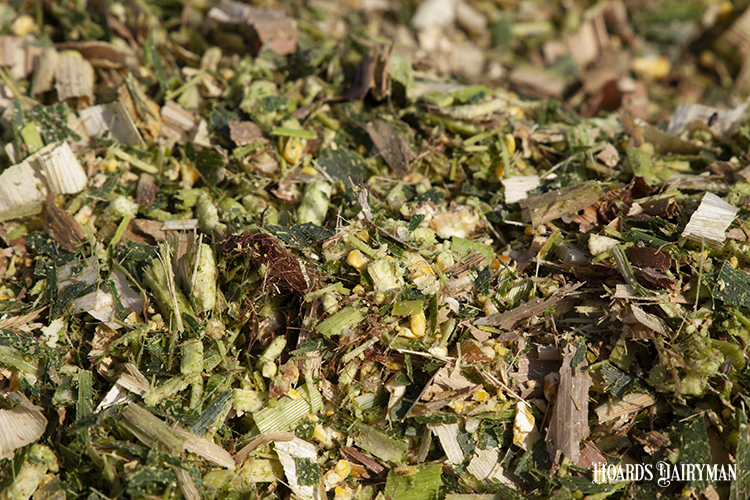
Manure will likely be unfortunately more valuable for many this year thanks to more bushels of corn passing through dairy cattle undigested. The combination of more expensive corn per bushel, coupled with corn grain that looks to be harder, are contributing factors to unrecognized economic value ending up in manure with this fall’s new crop. Harder and less digestible corn grain can be tied back to both the growing environment and a stover versus ear maturity disconnect in silage corn this year.
The past few growing seasons have yielded very different outcomes for dairy farmers throughout the U.S. With a recency bias, many will remember the heat and growing degree units that carried out during much of the growing season this year. A common theme that’s played out for the eastern half of the U.S., with the exception of Minnesota and the Dakotas, has been fairly adequate moisture along with above average heat units over the growing season’s back end. This all happened during corn grain filling as we approached silage maturity. Couple abundant heat units with adequate moisture and the net effect can equate to a quickly advancing ear.
Managing for silage quality, we’ve historically assumed that whole-plant chopped corn moisture and kernel maturity trend together. The aim should be harvesting at both 65% moisture and one-half milkline kernel maturity to optimize silage yield, quality, and fermentation potential. In the past few years, we’ve emphasized that we need to monitor both the whole-plant moisture and the ear maturity in case they disconnect.
This year, this has proven to be the case, and now that we’re into October, we’re gaining a clearer image of the resulting corn silage crop outcome. The nutritional characteristics are fascinating this year.
Dry matter content looks similar to prior years, as shown in Figures 1 and 2 for the Midwest and eastern U.S., respectively. However, rumen starch digestibility in silage has clearly dropped off substantially this year as shown in Figures 3 and 4.




Ears matured faster
Moreover, silage looks to be 5 to 10 units lower in rumen starch digestibility, and these observations trend with experience and discussions recognizing many acres of green plants but with mature grain. Put differently, this year’s crop looks like the ear was well ahead of the stover in maturity. As a result, silage grain may be more likely to bypass the rumen, increasing the bushels of corn in manure thanks to harder grain and less digestible starch.
Yet all is not lost!
While starch digestibility is a critical aspect to silage quality, your nutritionist will stress that fiber digestibility is also a strong contributing factor to your silage’s energy value per ton. Thanks to drier conditions for many earlier in the growing season, silage fiber quality appears to be trending above last year’s crop.
Improved fiber quality will help balance harder grain and net out to similar energy potential per ton relative to last year’s crop. We’ll cover the improved fiber digestibility with upcoming discussions, but in the meantime check in with your nutritionist if you’re about to feed this year’s silage.
In closing, I’m expecting fecal starch measures to take a jump this year. Pay close attention to your high pens’ manure when you start feeding your 2021 corn silage or snaplage. Let your silage or grain ferment as long as possible, grind your corn as fine as possible, or ask your nutritionist about other research-backed strategies to avoid increasing your manure’s value with added bushels of corn passing through your herd.








